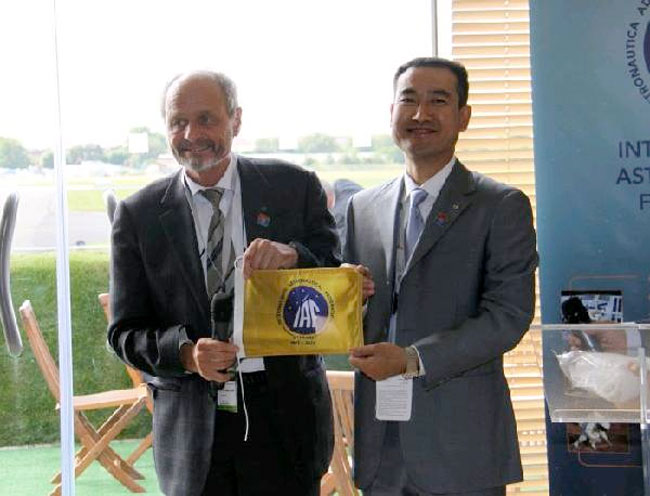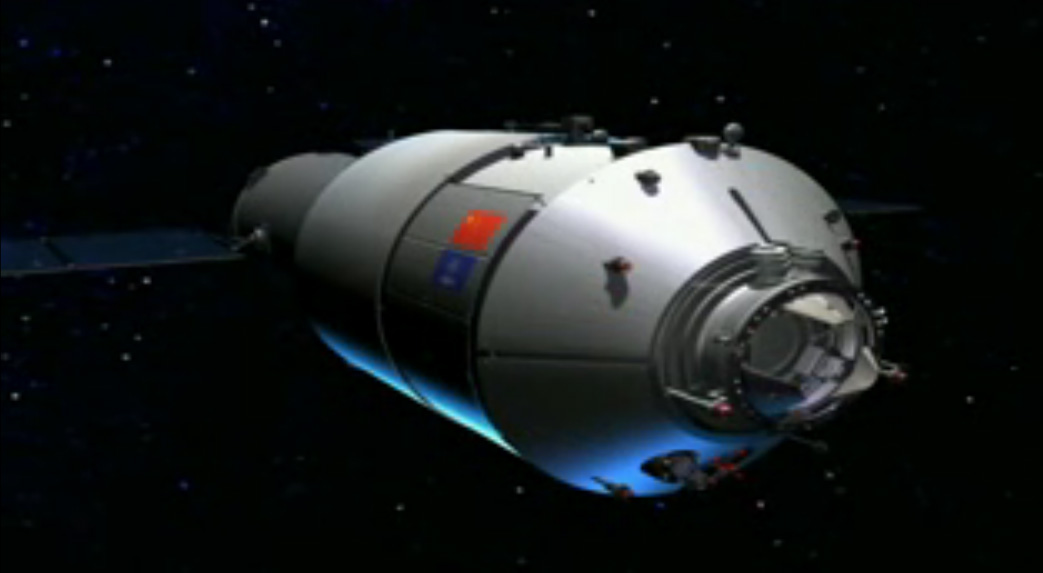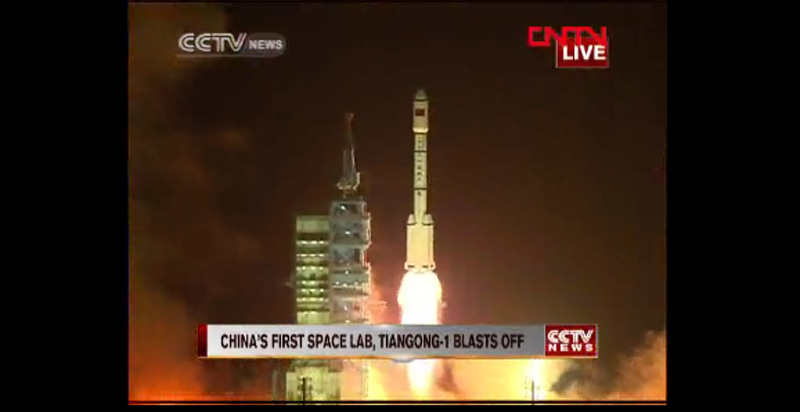China's First Space Lab Carrying Flags Flown on US, Russian Spacecraft

China launched its first space lab Thursday (Sept. 29), the unmanned Tiangong 1 module, on a two-year mission to test technologies needed to build the nation's first space station. The spacecraft also returned to space a commemorative cargo that was earlier flown aboard both American and Russian spacecraft to and from the International Space Station.
The 8.5-ton (17,000-pound) Tiangong 1 lifted off atop a Long March 2F rocket at 9:16 p.m. local time (1316 GMT/8:16 a.m. CDT) Thursday from China's Jiuquan Satellite Space Center in the Gobi desert. Now circling the planet, the module will await the arrival of Shenzhou 8, an unmanned capsule scheduled to launch in November, to perform a series of rendezvous and docking demonstrations.
Two additional capsules, at least one of them crewed, are planned to visit Tiangong 1 over the next two years before the 34-foot (10.4-meter) long module is de-orbited. [Photos: China Launches First Space Lab, Tiangong 1]
Tiangong 1's launch marks the latest milestone for China's human spaceflight program, which began in 2003 with the flight of taikonaut Yang Liwei on the Shenzhou 5 mission. Just the third nation to put a human into space, China has since launched two more crewed flights — the most recent in 2008 highlighted by the country's first spacewalk — and intends to be the third nation to deploy a space station.
Packed on board Tiangong 1 are 300 flags that previously flew aboard spacecraft belonging to Russia and the United States, the two countries that preceded China into space.
Around the world in three ways
The small yellow and blue flags celebrate the International Astronautical Federation's (IAF) first 60 years serving as a worldwide coalition of organizations active in space. They were presented to China to fly on Tiangong 1 at this year's Paris Air Show, where IAF president Berndt Feuerbacher presented them to Shenzhou 7 spacewalker Zhai Zhigang.
Breaking space news, the latest updates on rocket launches, skywatching events and more!
Last year, the same flags were launched on Russia's Soyuz TMA-20 spacecraft to fly to the International Space Station. Russian Federal Space Agency cosmonaut Dmitri Kondratyev, NASA astronaut Catherine "Cady" Coleman and European Space Agency astronaut Paolo Nespoli delivered the flags to the orbiting complex in December 2010, where they remained for five months. [9 Weird Things Flown on NASA Space Shuttles]
On June 1 of this year, the IAF flags returned to Earth on board the U.S. space shuttle Endeavour flying its final mission. Endeavour's commander Mark Kelly and his five STS-134 crewmates landed with the flags after completing a 12-day mission to install the Alpha Magnetic Spectrometer on the space station, a science experiment built in 16 countries, including China.
By the end of their first spaceflight, the 300 IAF flags had logged 169 days in space.
Promoting peace in space
With their second launch on board Tiangong 1, the flags have now fulfilled the IAF's desire that they fly on "all types of active manned spacecrafts in the world." They are slated to be returned in 2012 by the yet-to-be-named crew aboard Shenzhou 10, which may include China's first female taikonaut, Chinese space officials have said.
Upon receiving them back, the IAF has said it will give a flown flag to each of its member organizations, "so as to promote human peaceful use of outer space and develop international cooperation for manned space," Feuerbacher said.
Continuing reading at collectSPACE.com about China's "Heavenly Palace" Tiangong 1 space lab.
Follow collectSPACE on Facebook and Twitter @collectSPACE and editor Robert Pearlman @robertpearlman. Copyright 2011 collectSPACE.com. All rights reserved.

Robert Pearlman is a space historian, journalist and the founder and editor of collectSPACE.com, a daily news publication and community devoted to space history with a particular focus on how and where space exploration intersects with pop culture. Pearlman is also a contributing writer for Space.com and co-author of "Space Stations: The Art, Science, and Reality of Working in Space” published by Smithsonian Books in 2018.
In 2009, he was inducted into the U.S. Space Camp Hall of Fame in Huntsville, Alabama. In 2021, he was honored by the American Astronautical Society with the Ordway Award for Sustained Excellence in Spaceflight History. In 2023, the National Space Club Florida Committee recognized Pearlman with the Kolcum News and Communications Award for excellence in telling the space story along the Space Coast and throughout the world.



